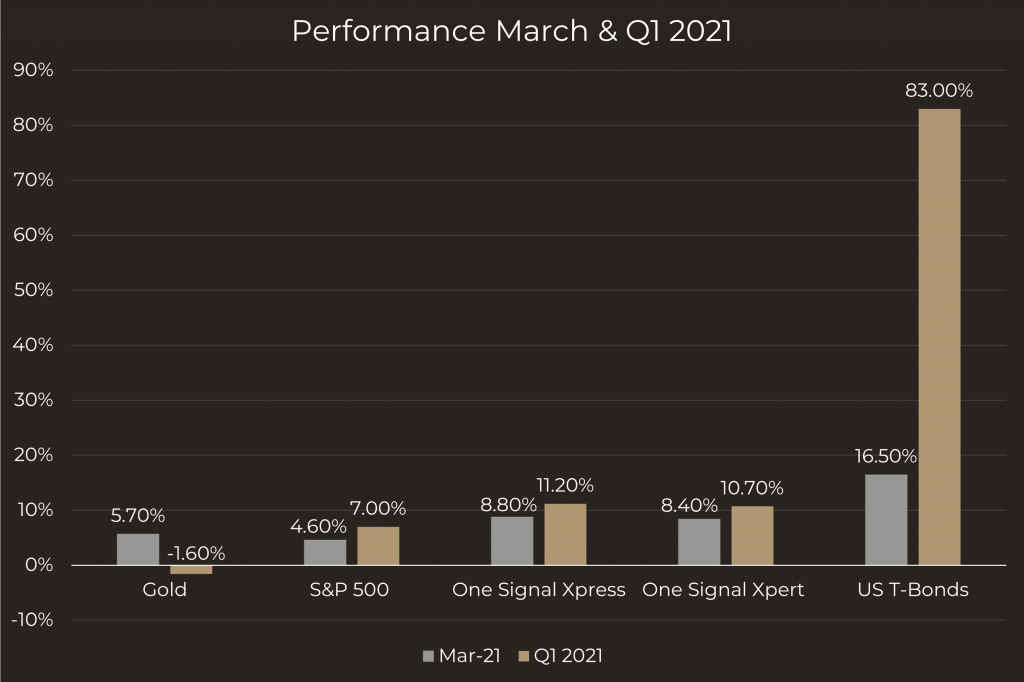What was driving the markets?
Despite high volatility in the markets towards the end of the quarter, U.S. equity markets surged higher in Q1 2021 on the back of two overriding themes: vaccine progress and stimulus. Both the stimulus at the end of 2020 ($900Bn) and the relief package signed in March ($1.9tn), equate to approximately 14% of US GDP. Additionally, the American Jobs plans which were announced in March includes an additional $2.25tn in spending geared largely toward improving transportation, communication and power infrastructure. This stimulus news, couples with unprecedented vaccine progress, translated into the prospect of the end of the global pandemic and its economic impact, therefore driving major stock indices up to new record highs.
Some statistics
The 31.03. does not only mark the end of the month, but also the end of the first quarter of the year. Latest now is the time for an initial assessment. This year’s Q1 2020 performance was very positive, with +3.39%, thus being far above-average.
Table 1: Average performance of the month of March during different periods
Remarkably, we had both the worst and the best March since 2000. Before that, the highest performance during this month was in 2000 and the worst in 2020, where we had one of the most significant crashes. On a closing price basis, the S&P 500 lost 28.52% in value between 04.03. – 23.03.2020.
We have ranked the performances during the third month of March since 1950 and find that, with a result of +3.39%, 2021 was in 18th place. This helped the S&P 500 to close with a plus of 5.53% in 2021. This performance is the 20th of 72 of the “eternal ranking” of the first quarter.
As a result, this price gain helped the S&P 500 to a quarterly close of +5.53% in 2021. This first-quarter performance is the 20th of 72 of the “eternal ranking” of the first quarter. Below we have a table with the average results of the first quarters of different periods.
Table 2: Average results of the first quarter of the year
This year, we had a positive month of March, as well as a positive first quarter. The question now is, what was the development of the S&P 500 for the rest of the year after a similar starting position? The following table summarizes the history for different periods:
Table 3: Average returns (April-December) after positive month of March and positive 1st Quarter
We observe that the development for the remainder of the year was not too bad, especially when comparing the proportion of positive periods to negative periods. We would like to remind our readers that these findings only serve as a demonstration and should not be an incentive to make investment decisions based on this. Positive performances in the past are no guarantee of future profits.
